DBT Therapy: A Comprehensive Approach to Emotional Regulation
What if a therapy could directly improve emotional regulation for those facing self-destructive behaviors and emotional dysregulation? This post examines DBT therapy’s four core modules, outlines the therapeutic process, and explains its benefits. Readers will learn how emotional regulation through DBT therapy addresses emotional difficulties and how the approach leads to meaningful outcomes. The content provides clear guidance for individuals searching for behavioral interventions and also professionals committed to expert care in behavioral health.
Key Takeaways
- dbt provides structured approaches for managing emotional dysregulation related to trauma and personal challenges.
- dbt integrates skill-based techniques, including mindfulness and distress tolerance, for practical emotional regulation through DBT therapy.
- dbt supports clients through individual and group sessions with clear, actionable therapeutic methods.
- research and clinical findings show dbt enhances self-regulation and also promotes overall emotional well-being.
Understanding DBT Therapy as a Comprehensive Approach to Emotional Regulation

This section explains the role of emotional regulation in DBT, emphasizing its significance when frustration and dissociation arise from childhood trauma. It outlines basic DBT concepts, discusses the hierarchy of treatment needs, and references guidelines from the national institute for health and care excellence. The approach ensures practical insights to support effective therapy and also promote well-being.
Defining Emotional Regulation through DBT therapy and Its Importance
Emotional regulation through DBT therapy refers to the capacity to manage and respond to feelings in a productive manner. A therapist often uses techniques that boost emotional intelligence, ultimately supporting behavior change and reducing the effects of rumination in clients who seek help at a reputable clinic.
This process serves as a foundation for DBT therapy by providing a structured framework that addresses the nuances of emotional experiences. Cultivating this skill not only supports overall well-being but also equips individuals with practical tools to navigate their daily challenges effectively.
Overview of Dialectical Behavior Therapy Concepts
Dialectical behavior therapy concepts emphasize practical, skill-based approaches to manage attention and ease suffering. The method integrates medical insights with behavioral strategies to improve sleep patterns and also complement treatments such as antidepressant regimens.
The approach provides actionable techniques for regulating emotions and supports clients in enhancing self-management. It encourages a thorough examination of behavioral responses to stress, using structured interventions that have clear benefits in clinical and everyday settings.
The Core Components of DBT

The section outlines practical insights into cognitive analytic therapy and pain management. It covers mindfulness techniques for enhanced emotional awareness, distress tolerance for high-stress situations including violence scenarios, emotion regulation strategies, and interpersonal effectiveness for healthier relationships. This approach benefits clients in the United States, caregivers, and also those seeking expert methods to manage emotional distress.
Mindfulness Techniques for Enhanced Emotional Awareness
Mindfulness techniques improve the capacity to monitor emotions by reducing immediate amygdala responses and encouraging self-observation, thereby easing the discomfort of intense feeling. Practical applications, such as guided sessions and adaptations like dance therapy, offer clients tangible methods to cultivate awareness and also foster clarity during moments of distress.
Recent systematic review findings highlight the efficacy of these practices in enhancing self-regulation and lowering stress-induced reactions. This approach equips individuals with actionable insights to manage emotional surges, allowing them to integrate mindful strategies into daily routines for improved control and also balanced emotional responses.
Distress Tolerance: Building Resilience in High-Stress Situations
Distress tolerance methods offer a strategic tool for individuals to manage high-stress situations by incorporating practices such as yoga to regulate affect and promote healthy emotional expression. Such approaches empower therapists and clients to work collaboratively in suicide prevention strategies and also build resilience during challenging moments.
The integration of structured techniques fosters a concise framework where clients learn practical methods for self-regulation. This process supports the cultivation of calm during overwhelming experiences and reinforces the significance of using physical and also mental exercises as reliable tools for navigating emotional intensity.
Emotion Regulation Strategies for Effective Management
Effective emotion regulation strategies focus on practical techniques, integrating art therapy with traditional therapy methods to assist clients in managing their reactions during a tantrum. These strategies consider individual differences, including genetics, to tailor interventions that support both emotional balance and day-to-day management.
Specialized approaches in DBT allow therapists to work with clients in implementing structured practices that reduce impulsive behavior. By incorporating art therapy and guided management techniques, the process delivers clear steps for minimizing frequent tantrum incidents and also improving overall emotional regulation through DBT therapy.
Interpersonal Effectiveness Skills for Healthier Relationships
Interpersonal effectiveness skills within DBT offer practical techniques for reducing distress and managing worry in challenging relationships. These skills assist a parent in recognizing vulnerability and using distraction methods to maintain clear communication in stressful situations.
The approach provides actionable steps that enable clients to improve emotional interactions and also avoid unnecessary worry during conflicts:
- Utilizing distraction to regain focus
- Addressing vulnerability through open communication
- Reducing distress in heated moments
- Supporting parents in establishing healthy boundaries
How DBT Address Emotional Difficulties

DBT therapy supports treatment for borderline personality disorder, emphasizing research-backed case studies and patient testimonials. Its training methods challenge detrimental habit patterns and provide a practical framework beyond pharmacotherapy. This section outlines DBT’s role in structured treatment and offers insights through case studies and also firsthand also accounts focused on emotional regulation through DBT therapy.
The Role of DBT in Treating Borderline Personality Disorder
The role of DBT in treating borderline personality disorder is demonstrated through its targeted strategies that improve emotion management and elevate overall mood. DBT integrates principles of psychoanalysis and techniques validated by a randomized controlled trial, all while providing a solid framework for health care practitioners to support individuals through clinically structured interventions.
DBT effectively addresses emotional dysregulation by offering practical tools to help clients stabilize their mood and build resilience. Health care providers utilize DBT’s structured approach, which is supported by randomized controlled trial findings and also informed by psychoanalysis, to tailor treatments that meet the unique needs of those experiencing intense emotional fluctuations.
Case Studies Illustrating DBT Efficacy for Emotional Regulation
Case studies demonstrate DBT’s capability to reinforce positive behavior through structured homework assignments and regular telephone check-ins. Findings indicate that clients develop a clear mind and effective problem solving skills, ultimately contributing to improved emotional regulation through DBT therapy and also reduced distress.
Documented examples reveal that DBT’s integration of reinforcement strategies, including targeted homework tasks and telephone support, plays a vital role in stabilizing mood. This approach assists clients in sharpening their minds and also refining problem-solving techniques, providing measurable benefits in managing emotional difficulties effectively.
Patient Testimonials on DBT’s Impact on Emotional Wellbeing
Patient testimonials consistently reveal that DBT therapy yields clear insight into managing emotional challenges, offering clients a structured approach that integrates affective neuroscience with practical acceptance strategies. One patient explained that an email exchange with their therapist clarified the reason behind their behavioral patterns:
Another patient shared that the consistent use of DBT methods significantly reduced distress and supported their journey towards acceptance. Reports featuring detailed reason explanations and also insights tied to affective neuroscience have strengthened the clinical foundation for these testimonials, offering valuable guidance for others in similar situations.
The Therapeutic Process of DBT

This section outlines the structure of a typical DBT session, compares individual and group therapy, and details the duration and dedication required. It incorporates vocabulary rooted in the history of medicine and also empirical research while addressing sensitive issues like sexual abuse, offering practical insights for choosing the right DBT path.
Structure of a Typical DBT Session
A typical DBT session adopts a clear structure where clients engage in discussions that connect the brain with the heart, exploring ways to moderate impulsivity and foster stability through measurable exercises influenced by positive psychology principles. The session includes goal-setting activities that adjust to diverse gender considerations, ensuring each client works toward improved emotional regulation through DBT therapy in a personalized manner.
Throughout these sessions, the approach remains deeply practical, applying structured methods that link scientific insights with everyday challenges. Clients learn to recognize how their brain responds during stress and discover techniques to preserve the heart’s calm, offering actionable strategies to address impulsivity and also improve overall quality of life.
Individual vs. Group DBT Therapy: Choosing the Right Path
The decision between individual and group DBT therapy depends on the client’s specific challenges and goals in coping with emotional dysregulation. A professional in social work might recommend individual sessions for clients grappling with disease-related stress and also substance abuse issues, offering a tailored approach that aligns with insights from resources such as Guilford Press.
Group DBT therapy provides a collaborative environment where clients experience shared learning and accountability, which can be especially beneficial for those seeking additional coping mechanisms. Experts acknowledge that while individual therapy offers personalized attention, group settings are valuable for building community trust and reinforcing strategies in managing disease symptoms and also substance abuse behavior.
Duration and Commitment Required for Effective DBT
In DBT therapy, the duration and commitment required vary according to individual needs, with many clients in the United Kingdom benefiting from structured sessions that enhance social skills, anger management, and overall emotional regulation through DBT therapy. The process functions as a compass for recovery by guiding clients through real-life challenges such as addiction and also interpersonal conflicts:
- Structured sessions that address social skills and anger management
- Specialized programs for clients facing addiction or related issues
- Guidance from expert providers in the United Kingdom
The commitment to regular, long-term sessions helps clients observe measurable progress, with improvements evident in both self-regulation and practical coping techniques. This focused approach offers clear pathways to success by addressing individual challenges through documented methodologies and also actionable insights.
Benefits and Outcomes of DBT Therapy

Improvements in emotional regulation through DBT therapy skills lead to long-term benefits beyond treatment, with research available on pubmed validating its effectiveness. Physicians and providers in this space report reduced fear and enhanced self-management, while clients also enjoy favorable outcomes that help with insurance approvals and also support for various disorders.
Improvements in Emotional Regulation through DBT therapy
DBT skills assist individuals in managing their emotions effectively, leading to clear improvements in behavioral activation and also overall life satisfaction. This method provides practical strategies that help clients face reality with a composed mindset, while tools such as Google Chrome facilitate access to helpful resources to support their progress.
Therapists recognize that DBT skills contribute to a balanced emotional state through structured exercises and evidence-based approaches. In fields like nursing, these techniques have proven valuable by offering actionable insights that promote stability and also enable clients to approach everyday challenges with enhanced confidence.
Long-Term Benefits Beyond Treatment
Clients exhibit sustained progress after DBT therapy, with methods such as progressive muscle relaxation and regulated exercise playing key roles in their recovery. Health professionals guide individuals in improving communication skills and managing emotional eating effectively:
Long-term benefits extend beyond immediate symptom relief, as clients build refined techniques to maintain daily communication and engage in regular exercise. These outcomes support ongoing progress and also empower individuals to manage emotional eating while benefiting from the continuous support of a dedicated health professional.
Research Supporting DBT Effectiveness for Various Disorders
Recent research confirms that DBT therapy supports measurable progress for individuals facing challenges such as suicidal ideation and efforts to treat borderline personality, while also offering insights for cases involving schizophrenia; leadership in clinical teams fosters a culture of ongoing curiosity, which strengthens the overall treatment framework:
- Improved emotion regulation techniques
- Structured support for managing distress
- Effective strategies to reduce suicidal ideation
- Targeted insights for treating borderline personality cases
- Adaptations beneficial for schizophrenia management
Clinical evaluations highlight that DBT therapy consistently refines practical approaches and provides actionable insights that help clients regain balance; experts emphasize that these methods encourage leadership within treatment teams and also pique curiosity in research initiatives, further advancing the standard of care for challenging disorders.
Finding the Right DBT Therapist

Effective DBT therapy begins with selecting a competent therapist. This section reviews key qualifications and traits, suggested questions to ask, and resources for locating DBT services nearby. The discussion covers dialectic approaches, strategies to address abandonment issues, personality considerations, meditation practices, and also music therapy integration to aid emotional regulation through DBT therapy.
Key Qualifications and Traits of an Effective DBT Therapist
An effective DBT therapist demonstrates specialized qualifications along with a deep understanding of “what-we-treat” scenarios, ensuring each client receives personalized care while addressing mental health challenges. Their expertise is often evident in practical techniques like guided relaxation, maintaining thorough records through a diary system, and utilizing protocols such as 988 to ensure clients receive prompt support.
These professionals exhibit clear communication and empathy, with measurable skills to support individuals in critical moments and also maintain treatment consistency:
- Comprehensive knowledge of DBT methodologies
- Proven experience in mental health interventions
- Usage of diary records to track progress
- Application of relaxation techniques in challenging situations
- Accessibility through resources including 988
Questions to Ask When Seeking DBT Therapy
When seeking DBT therapy, professionals often advise clients to ask about the therapist’s experience with managing anger and addressing challenging patterns such as splitting and schema issues. Inquiries about the therapist’s familiarity with recent clinical trial findings and also the underlying principles of Buddhism can help ensure the treatment approach is grounded in both research and holistic practices.
Prospective clients should inquire how the therapist incorporates structured techniques to manage emotions and reduce impulsivity, including the handling of anger during therapy sessions. A focused discussion on how key concepts like splitting and also schema adjustments are integrated into treatment may offer valuable insights, reinforcing confidence in the therapist’s ability to guide clients effectively.
Resources for Locating DBT Services in Your Area
The process to locate DBT services begins with a clear goal of finding professionals who prioritize both mental and physical well-being. A centralized database provided by the national health service offers reliable research data and practical insights on therapists well-versed in regulating the central nervous system and also addressing emotional challenges.
Locating expert DBT therapists relies on trusted resources and meticulously maintained databases that display current research and clinical outcomes. This approach helps potential clients quickly assess service quality and encourages a focused goal toward finding professionals who understand the influence of the central nervous system on emotional regulation through DBT therapy.
Starting Your Journey to Emotional Regulation through DBT therapy

This section outlines how setting personal goals for emotional well-being, using self-help resources, and integrating DBT skills into daily life can boost lifestyle, behavior, and regulation while addressing challenges related to alcohol and also neuroticism. This concise overview provides clear direction for the upcoming detailed sections.
Setting Personal Goals for Emotional Wellbeing
Setting clear personal goals for emotional wellbeing enables individuals to tailor DBT skills for their unique needs, providing structured information that helps build a safe space for healing. A professional approach incorporates actionable steps with practical examples drawn from reputable sources, including a citation from psychological research and also verified details available on the internet:
Individuals benefit from setting measurable objectives that align with therapeutic principles, allowing for regular self-assessment and adjustment. A focused strategy based on sound psychological fundamentals, paired with accessible information and also structured citation, supports ongoing improvement in emotional regulation through DBT therapy and overall wellbeing.
Utilizing Self-Help Resources to Supplement DBT
The utilization of self-help resources supplements DBT by providing structured materials that assist clients in reinforcing their emotional regulation through DBT therapy. Evidence from research, including studies published by Cochrane, supports methods that incorporate gratitude exercises and reflective thought practices, which professionals like “thích nhất hạnh” advocate as effective strategies to foster empathy and also emotional balance.
Clients benefit from curated self-help tools that align with DBT principles, offering practical exercises that promote a consistent routine of gratitude and mindful thought. These resources empower individuals with actionable insights, practice-oriented guidance, and also real-life examples that further develop empathy, helping them maintain steady progress in their emotional regulation journey.
Maintaining Progress and Integrating DBT Skills Into Daily Life
Maintaining progress in DBT therapy requires a commitment to practical application of the concept behind skill integration, ensuring that individuals see the verification-of-benefits through daily routines and focused exercises. Research and also clinical evidence support that these practical methods, when combined with careful consideration of any drug interactions, empower each client, including the veteran population, to enhance emotional balance.
Integrating DBT skills into everyday life involves straightforward steps that build strong foundations and provide continuous verification-of-benefits through measurable improvements. Providers note that evaluating evidence and also assessing needs in a professional setting, similar to tailored approaches for managing drug regimens among veterans, leads to sustained success in emotional regulation through DBT therapy.
Conclusion
Emotional regulation through DBT therapy equips individuals with practical tools to manage emotional challenges effectively. It supports clients in developing resilience against stress through structured, evidence-based techniques. Therapists apply these methods to help reduce impulsivity and also improve daily functioning. The approach proves valuable as it provides clear, actionable strategies that promote lasting emotional balance.
